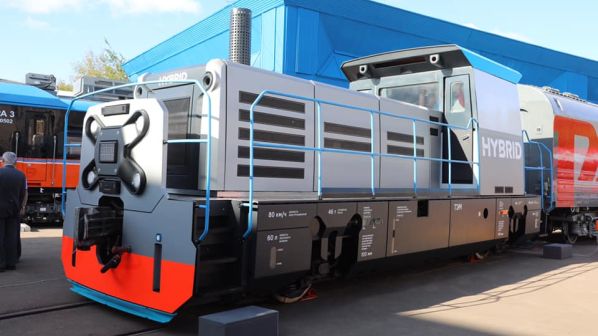The hybrid locomotive is powered by a 200kW diesel engine and a 240kW a lithium-ion battery system, which can operate together or individually. The shunter is designed for use in urban areas and can move up to 1300 tonnes, equal to 24 single-deck coaches or 20 double-deck coaches.
The locomotive was developed in partnership with Rosnano and will act as the basis for the development of other hybrid locomotives.
Machine vision
TMH is trialling the use of machine vision on the locomotive, which it says will enable remote control and eventually autonomous operation, although it says this will require infrastructure improvements, as well as the introduction of predictive analytics capabilities using AI which will allow predictive maintenance. TMH has also developed a digital twin of the locomotive which will allow it to digitally test new developments.
The design is modular, allowing the engine to be changed and modified with different power packs, and TMH is currently working alongside Alstom, which has a 33% stake in TMH, to develop hydrogen power packs.
TMH estimates the new design could result in 30% fuel savings compared with current similar locomotives.
In June, Rosnano, Russian Railways (RZD) and TMH signed a memorandum of understanding (MoU) agreement at the St Petersburg forum for the creation of environmentally-friendly shunting locomotives using a hybrid drive based on domestic lithium-ion batteries. The agreement includes the possibility of supplying 131 locomotives to RZD within six years of the acceptance of the first unit.

